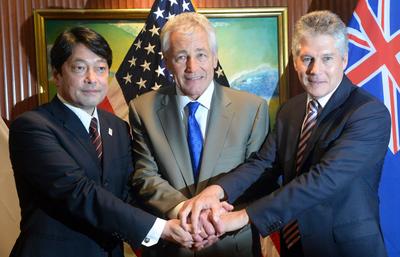If Asia heads toward a period of conflict and uncertainty, with rising tensions in the South China Sea and East China Sea or the threat of nuclear conflict in East Asia, resources will be diverted to strengthening defence capabilities and foreign and local investors will be deterred. Progress toward expanding regional economic and political cooperation is likely to slow.
Inequality as a source of social discontent is another factor that should not be dismissed. China’s growth has primarily occurred in the coastal regions; inland provinces have lagged behind. Migrants from these areas are now seeking economic opportunities in the booming coastal cities.
In conflict zones like Afghanistan, Myanmar and Nepal, the gap between the wealthy and the poor has widened enormously. Internal conflict, armed resistance and political violence result in a cycle of despair. Earnings are salted away overseas, corruption and the diversion of state assets to private hands undermines trust in civil authority and foreign and domestic investors take a short-term view. Even societies like Singapore and Hong Kong are characterised by widening income inequality. Growing social inequality in such rapidly changing societies highlight the risk of domestic upheaval.
These vulnerabilities should make us pause before we proclaim an Asian Century. Unless there is an outbreak of a major war involving the great powers or another great depression sapping American energy, the United States will not go into imminent decline. Even after China surpasses it economically over the course of the next decade, the United States will continue to be the strongest military power.
Although Asian hard power is increasing, especially on economic issues, the West is subtly able to shape global agendas. The governance of international institutions continues to be dominated by the West. Asia’s rising power will only be felt lightly in the UN Security Council, the IMF, the World Bank and the WTO, and there will be little progress on restructuring the UN Security Council to include Japan and India as permanent members.
On the economic front, negotiations for a Trans-Pacific Partnership (TPP), for example, reflect an American interest in ensuring open markets in areas suited to the United States such as investments, competition policy, labour standards, government procurement and intellectual property rights. At the same time, the United States blocks progress on issues such as unrestricted access for textiles and clothing — an area of interest to Vietnam — and an end to American agricultural subsidies. While Japan has stated that it is interested in joining the negotiations and China has made positive noises in recent weeks, it is unlikely that they will participate unless the package is re-opened and their interests accommodated as well.
The post-World War II arrangement of an American always providing the head of the World Bank and a European heading the IMF continues, despite increasing opposition from developing countries. Rising powers such as China, India and Brazil still have voting rights in the IMF based on the quota system, which does not represent their contribution to the global economy.
Over the next decade, the regional environment will become more fluid in Asia. Demographic trends will pose a challenge. In South Asia, continued high population growth will result in a young population, in contrast to China where the one-child policy will lead to a rapidly ageing population. Continued tensions in India, Pakistan and Afghanistan bring with them a sense of regional insecurity, encourage high military expenditures and highlight the risks of conflict within the sub-continent. A youthful population could increase pressures for more muscular security policies in the region.
The opposite is true for China. Although China’s size and self-image as a rising global power is likely to lead to a more assertive foreign policy in the short term, demographic pressures will eventually force a shift toward greater caution. As China ages, there will be a fall in the number of youth entering the work force and available for deployment in the armed forces. But while policymakers in China are aware of this trend, demographic policy changes lag. Even if there is a policy shift in favour of larger families it will be difficult to change mindsets, especially of women who have been freed from routine domestic duties.
Ever since Deng Xiaoping’s reforms in the 1980s, China has been emerging as a middle-income economy. But as China moves up the industrial production value chain, the challenge will be to innovate and take the lead in emerging technologies. A short cut would be to acquire leading edge technology companies in the West, especially as the current economic crisis starves them of funds. This will lead to greater scrutiny for national security reasons, especially in the United States.
With the diversity of challenges facing Asia over the next decade, gauging the likely outcome of current developments becomes more difficult. The West will resist a power transition to Asia, while weaker Asian states will also be more wary about the growing power and influence of the emerging regional hegemons.
China’s neighbours will be pulled in two directions: increasingly oriented towards China economically but moving closer to the United States and one another as security partners.
Barry Desker is Dean of the S. Rajaratnam School of International Studies (RSIS), Nanyang Technological University. A version of this article was first published here, in The Straits Times.

